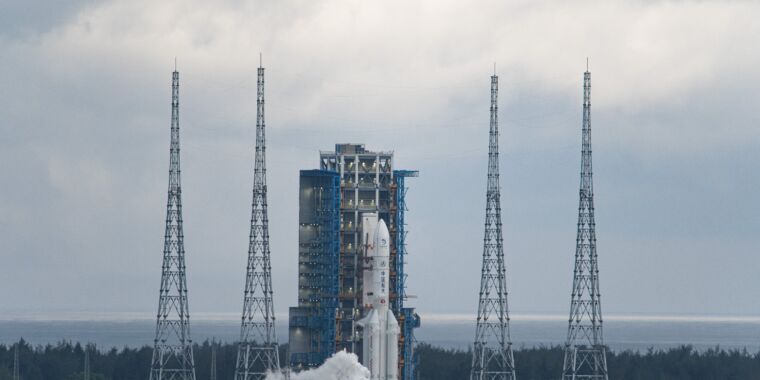China’s Chang’e-6 Mission: Advancing Lunar Exploration
China recently embarked on a remarkable lunar quest, launching the Long March 5 rocket to collect unprecedented samples from the Moon’s far side. The Chang’e-6 spacecraft, weighing 8 metric tons, includes an orbiter, lander, ascent vehicle, and return spacecraft, with a primary goal of retrieving rocks and soil for further analysis.
Building on Past Success
Initiating a series of lunar triumphs, China achieved a soft landing on the Moon’s far side in 2019 through the Chang’e-4 mission. Subsequently, the Chang’e-5 mission in late 2020 marked a historic milestone by collecting 1.7 kg of lunar rocks—previously a feat accomplished only by the U.S. and the Soviet Union.
Chang’e-6 now aims to elevate China’s lunar exploration to new heights by extracting approximately 2 kg (4.4 pounds) of rocks from the Moon’s far side, offering scientists invaluable insights into this uncharted territory.
Future Endeavors and Technological Advancements
The launch of the Chang’e-6 mission aligns with China’s strategic vision for lunar exploration. Complementing this initiative, the Queqiao-2 relay satellite deployed earlier this year establishes crucial communication links with the Moon’s far side. Additionally, China has disclosed plans for upcoming lunar missions—Chang’e-7 and Chang’e-8—that will pave the way for future manned missions and resource assessments.
Anticipated to land two taikonauts on the lunar surface in 2029 or 2030, China aspires to establish a lunar outpost. In a parallel endeavor, NASA’s Artemis program, comprising the U.S. and numerous international partners, seeks to revitalize lunar exploration by collaborating with commercial space entities to develop sustainable missions.
NASA’s Distinct Approach
While China has emerged as a frontrunner in lunar exploration, NASA is pursuing a distinctive route by forging partnerships with the commercial space sector to cultivate a diverse fleet of cargo landers and human-carrying spacecraft. NASA’s methodology, emphasizing sustainability and commercial innovation, sets the stage for a transformative lunar enterprise in the coming years.
This divergence in strategies represents a compelling rivalry between China’s traditional model and NASA’s pioneering initiatives. Consequently, the evolution of this lunar race promises to captivate observers with its unfolding saga, propelling humanity further into the cosmos.
Image/Photo credit: source url





